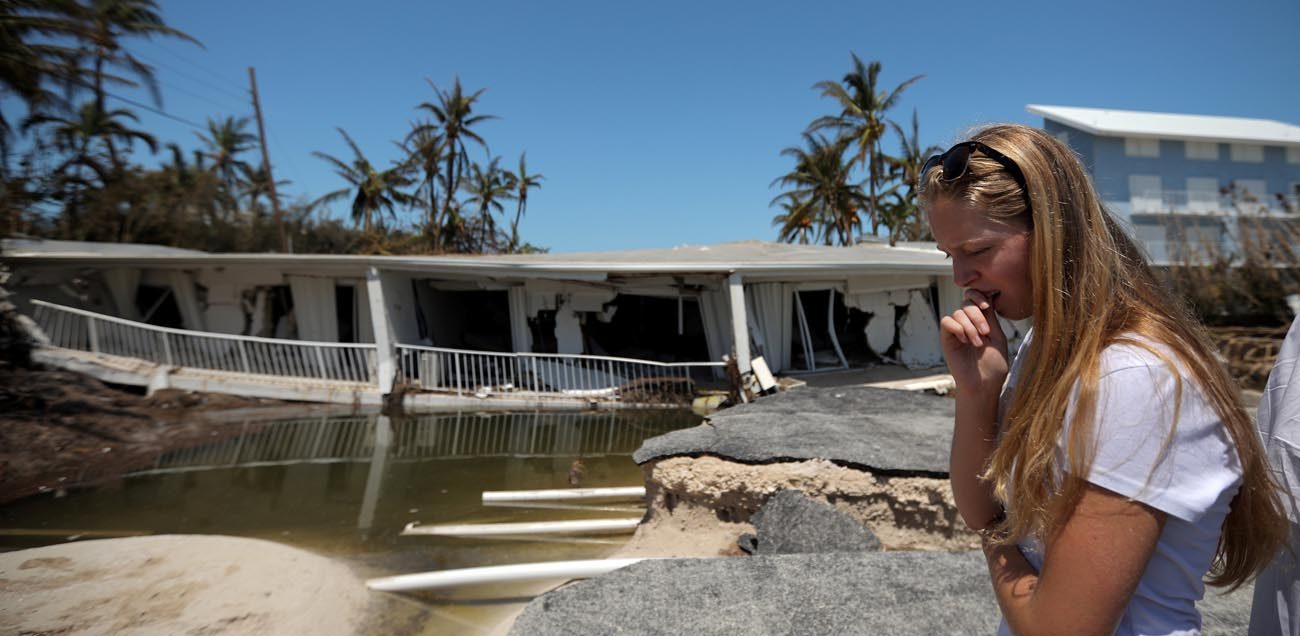IMMOKALEE, Fla. (CNS) — Peter Routsis-Arroyo, the CEO of the Diocese of Venice’s Catholic Charities, said Hurricane Irma has brought normal life to a standstill in the entire Southwest Florida region.
While a large percentage of the population of towns from Marco Island to Naples to Sarasota and Venice had evacuated the state altogether, Routsis-Arroyo is putting a special focus on the fragile, year-round migrant worker communities throughout the area.
Almost immediately after the hurricane made landfall as a Category 4 storm in the Florida Keys in the state’s southernmost tip and exited the state’s northern border with Georgia, leaving a statewide trail of damage and flooding, Routsis-Arroyo was in his car touring some of the interior agricultural towns of Immokalee and Arcadia, where Catholic Charities operates services for the extensive farm worker communities there.
[hotblock]
Standing water in many communities of Southwest Florida will need to recede before Knights of Columbus emergency deliveries and disaster response programming can get underway, said Routsis-Arroyo, who is himself a Knight of Columbus. He was anticipating a first truckload of emergency aid to come down from Gainesville.
“We will have to wait for the waters to recede, and you also have to be very cognizant that it’s almost impossible to get gasoline in Collier County, and many other places,” said Routsis-Arroyo, who is responsible for the total operation of the organization, overseeing 27 locations covering a 10-county area in Southwest Florida.
“I would like to see some Knights of Columbus teams help man the distribution of emergency relief when we are able to move the trucks into the area,” he said. Routsis-Arroyo also is a commissioner with the Fort Myers Housing Authority.
A resident of Cape Coral, near Fort Myers, Routsis-Arroyo spoke to the Knights of Columbus by telephone after a fact-finding tour around the region, including a stop at the Our Lady of Guadalupe Catholic Church and Catholic Charities outreach offices in Immokalee. The center there was expected to be an important local resource for hurricane recovery following Irma.
Routsis-Arroyo also spoke of the exceedingly long line to get gasoline in Fort Myers at the conclusion of his tour Sept. 12. Local media were reporting some lines for gasoline were seven to 10 miles long and well-fortified with armed law enforcement as temperatures and tempers sometimes compounded the frustrations of trying to get back to normal life after the storm.
The Catholic Charities program director in Immokalee, Peggy Rodriquez, said localized flooding and standing water in the low-income housing here was making life hard for many of the area residents. She and her staff are overseeing a daily morning distribution of foodstuffs at her center there near the Our Lady of Guadalupe Church.
In nearby Fort Myers and Naples, many of the same problems were complicating recovery for those coastal population centers, which were suffering from extensive tree damage, power outages, gasoline shortages and many flooded streets.
In Naples, Florida Power & Light officials were just getting out to assess the damage and beginning to fix downed power lines. But the picturesque beachside town was almost completely shut down, as many of the shop owners and residents had evacuated the area, and a sundown to sunup curfew is in place for the foreseeable future.
***
Tracy is a correspondent for the Florida Catholic, newspaper of the Archdiocese of Miami.
PREVIOUS: Bishops urge extending renewal deadline for DACA youth in Texas, Florida
NEXT: Logistical problems slow outreach, facilities assessment in Florida Keys




Share this story